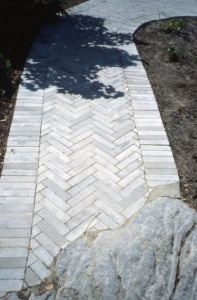AFTER an amazing autumn, we’re now into the second week of winter and the mild weather continues.
I am still picking tomatoes growing outside and fuchsias still in flower. Regular falls of rain, not too heavy, has meant that no plants needed watering for at least the last two months, with the exception of container-grown plants or perhaps those under eaves.
GREY or silver-foliaged plants are usually indicative of coming from a hot, dry climate. The greatest variety of such plants is from the Mediterranean and southern European region. Typical examples include lavender, thyme, cistus and many of the salvia family. This characteristic of grey foliage also applies to some South African plants.
Teucrium fruticans from Southern Spain and Morocco fits into this category and has been available for many years with its silver grey foliage and blue flowers. I have used this in gardens as an excellent dense hedge, growing 2-3m tall.I am often asked for suggestions of a fast-growing hedge other than the ubiquitous photina or pittosporum. For some Teucrium fruticans grows too fast with the complaint it has to be clipped too often!
If you like the look of Teucrium and wish there was a dwarf variety for low-growing hedges, the answer is Teucrium fruticans or “Silver Box”. Its sky-blue flowers appear from autumn and into spring. It is a compact variety growing to one metre tall with a spread of 60cm that responds well to clipping.
It is ideal as a border to paths, planting at least 40cm from the edge of the path. It loves full sun and, once established, is extremely drought tolerant and is tolerant of most soils. Fruticans simply means shrubby. It should now be available from your local garden centre.
WINTER is an ideal time to tidy up some of the hard landscaping in the garden before spring, which is just 10 weeks away!
With this in mind, here are a few pointers on paths and steps. Ideally paths should be at least 1.5m wide. Wide enough to wheel the barrow or for two people to walk next to each other. This is particularly important if you either have a disabled person living or even visiting your home. If this is the case, a gently sloping ramp is preferable to steps. Always have paths leading somewhere. I thought you would love this photo I took some years ago, does it lead somewhere, yes, into a big rock!AND for steps the rising part should not exceed 18cm or less than 12.5cm, with the tread at least 30cm. In gardens, I always try to make the step at least 35cm deep. If the rise is too steep, incorporate one (or even several) landings at least 80cm to 120cm square.
Rather than going straight up a slope, think about taking the path up the side of the slope. Remember sheep tracks; they always use the easy way up a slope.
SOME weeks ago I mentioned the ridiculous lack of space allocated for trees in some gardens. A reader has drawn my attention to another perfect example at a new display home. The space just 8m x 1.5m and the trees, not just one, but six planted less than a metre apart. The trees are Pyrus calleryana “Bradford”, which grow to 11m x 6m plus! Please, builders/developers get some professional advice before planting.
Jottings…
• Cut paeony leaves to ground level.
• Spray fruit trees with Bordeaux or Kocide once all leaves have fallen. This is just as important as spring spraying for brown rot.
• Lift dahlia tubers. If named varieties, write the name on them with a waterproof Texta and store in sawdust or dry washed river sand in a dark place.
• Prune hydrangeas by removing the old wood of previous years in the centre and reducing last year’s growth to three nodes (leaf joints) counting from the base.
The post Gardening / Enjoying the fruits of mild weather appeared first on Canberra CityNews.

